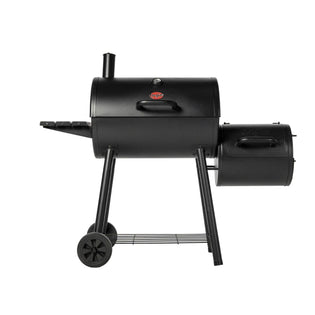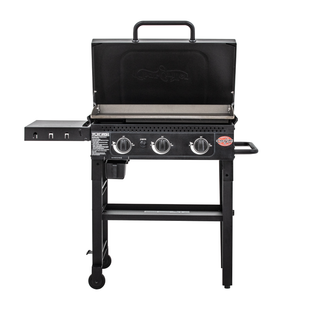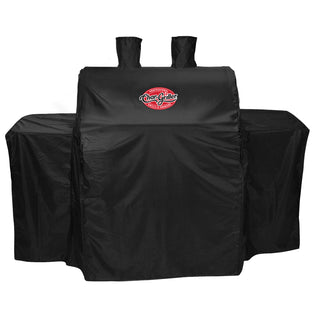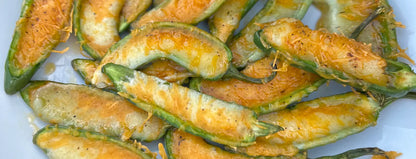Timing Your Backyard BBQ Like a Pro
We've all been there: you roll up to the cookout, everyone's hungry, and the grill master is still lighting the charcoal while the potato salad sweats in the sun. Suddenly, you're eating brownies off a paper towel while the ribs are still hours from done.
Let's fix that.
Whether you're hosting a few friends or the whole block, timing your backyard BBQ is the difference between chaos and a legendary cookout. Here's how to plan it right—from defrost to dinner bell.
No more eating dessert before the ribs.
Your Backyard BBQ Timing Blueprint
Here's a simple BBQ timeline to help keep things moving and your guests well-fed (in the right order).
24–48 Hours Before
Thaw your meat in the fridge. This is crucial. A frozen brisket won't cook itself.
- Brisket or pork butt: 36–48 hrs
- Ribs or whole chickens: 24–36 hrs
- Steaks or burgers: 12–24 hrs
6 Hours Before Guests Arrive
- Prep your proteins (season, marinate, rub).
- Double-check fuel: charcoal, wood chunks, fire starters.
- Chop sides like slaw, salad, or mac n' cheese.
- Set out your gear: cutting boards, trays, thermometers, etc.
4 Hours Before
- Light your grill or smoker if doing low & slow cuts like ribs, pork butt, or brisket.
- Place meat on early to give yourself wiggle room.
- Start a cooler for drinks and let guests know when to arrive.
1.5–2 Hours Before
- Fire up the griddle or hot side of the grill if cooking burgers, sausages, or chicken wings.
- Prep your vegetables, grill fruit, or warm sides like baked beans.
30 Minutes Before
- Start warming tortillas, buns, sauces, and sides.
- Set out utensils, condiments, and plates.
Party Time 🎉
- Pull meat when ready and let it rest.
- Serve in rounds—snacks, then mains, then dessert.
- Keep it casual and flexible—but don't start the cake until the grill cools down.
Cheat Sheet: Thawing Time by Meat Type
| Meat Cut | Fridge Thaw Time | Quick Tip |
|---|---|---|
| Brisket (10–12 lb) | 36–48 hours | Place on tray to catch drips |
| Pork Shoulder | 36–48 hours | Rub the night before |
| Baby Back Ribs | 24–36 hours | Remove silver skin ahead of time |
| Whole Chicken | 24–36 hours | Pat dry before seasoning |
| Steaks (1 inch thick) | 12–24 hours | Bring to room temp before grilling |
| Ground Beef | 12–18 hours | Season just before cooking |
Cheat Sheet: Cooking Time by Protein
| Protein | Grill Temp (°F) | Cook Time Estimate | Target Internal Temp (°F) |
|---|---|---|---|
| Baby Back Ribs | 250–275 | 4–6 hours | 195–203 (for tenderness) |
| Pork Shoulder | 225–250 | 1.5–2 hrs/lb | 200–205 (pull-apart) |
| Brisket | 225–250 | 1–1.5 hrs/lb | 203–210 (probe tender) |
| Chicken Quarters | 350–375 | 35–45 minutes | 175–180 (thigh/dark meat) |
| Whole Chicken | 325–375 | 1–1.5 hours (varies) | 165 (breast) / 175 (thigh) |
| Burgers (1/3 lb) | 400–450 | 5–6 minutes per side | 160 (ground beef) |
| Sausages | 350–375 | 15–20 minutes total | 160 (pork or beef) |
| Steak (1.5 inches thick) | 500+ | 3–5 minutes per side | 130–135 (medium-rare) |
Pro Tips for Flawless Timing
- Start early—you can hold meat in foil or butcher paper in a warm cooler for hours.
- Use thermometers, not guesswork. Target doneness matters more than minutes.
- Stagger your cooks: smoke first, grill second, sides last.
- Have snacks ready: chips, dips, grilled veggies, or sausage bites keep hangry guests happy.
- Keep dessert chilled until the end—no one wants melted banana pudding at 3 p.m.
Grills Built for Better Timing
Char-Griller offset smokers, dual fuel grills and griddles are designed for multitasking and crowd control.
- Offset Smokers: Smoke ribs or pork while leaving space for appetizers or wings on the main grate.
- Flat Iron® Griddles: Handle bacon, eggs, sliders, or tortillas without skipping a beat.
- Barrel Grills: Plenty of space for zone cooking with Char-Griller Lump Charcoal and wood chunks for true flavor layering.
- Dual Fuel Grills: Provide long smoking opportunities for meats and quick grilling capabilities for everything else.



How Much to Grill
When planning what to grill, think about variety and volume. A good rule of thumb is ½ pound of meat per adult and ¼ pound per child. That means a 10-pound pork shoulder can easily feed 20 hungry guests, while a brisket in the 12–14 lb range covers 20–25 portions. Add in a few racks of ribs (one rack serves 2–3 people), and you've got a crowd–pleasing variety.
For sides and snacks, overestimate slightly—people graze! But for meats, plan just enough to impress without overload. Pro tip: always have a little extra on hand for late arrivals or second helpings.
| Protein | Serving Size per Person | Feeds (per 5 lbs or unit listed) | Suggested Internal Temp (°F) |
|---|---|---|---|
| Pork Shoulder | 1/3 - 1/2 lb | 10-15 people | 195-205 |
| Brisket | 1/2 lb | 10 people | 195-205 |
| Ribs (Baby Back) | 1/2 rack | 5-6 people | 190-203 |
| Chicken Quarters | 1 quarter | 4 people | 175 |
| Burgers (1/4 lb each) | 1 burger | 20 people | 160 |
| Hot Dogs | 1-2 hot dogs | 10-12 people | 160 |
What to Grill
One of the best ways to have a killer spread is to use seasonally ripe produce. Seasonal fruits and vegetables are harvested at their peak ripeness, which means they're naturally more flavorful, juicy, and vibrant. Grilling enhances those flavors with a slight char and caramelization, think sweet corn in summer or juicy stone fruits like peaches and plums.
Pair seasonal produce with your protein. Grilled peaches go great with pork. Summer corn brings out the best in burgers. Roasted root vegetables are perfect for fall roasts. Timing your menu to the season makes every bite count.



Get Creative
If you're hosting a BBQ for a holiday, you have the best opportunity to try fun and creative recipes. Here are some of our ideas to celebrate your holiday with fun recipes.
How to Grill Out for a Great 4th of July
Spooky Good Halloween Recipe Round Up
No matter the time of year, there's always a reason to fire up the grill. By aligning your menu, and decor with the season, you create cookouts that feel intentional, festive, and memorable. From summer smoky classics to fall's cozy, fire-kissed flavors, a seasonal BBQ keeps things fresh and fun. Whether you're celebrating a holiday or just the weekend, let the calendar inspire your next backyard feast, and make every season a reason to grill.

 Flat Iron® Portable 17-inch Gas Griddle
Flat Iron® Portable 17-inch Gas Griddle
 Flat Iron® Premium Gas Griddle
Flat Iron® Premium Gas Griddle
 Flat Iron® Gas Griddle with Lid
Flat Iron® Gas Griddle with Lid


 Sauced and No Sauce Spare Ribs
Sauced and No Sauce Spare Ribs
 Pulled Pork n' Bacon Cheesy Sliders
Pulled Pork n' Bacon Cheesy Sliders
 Smoked Pulled Leg of Lamb
Smoked Pulled Leg of Lamb




